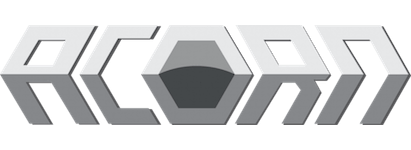
Kanban shelving systems can be optimised for c-part availability in warehouse and production facilities for picking and packing, or immediate production line assembly needs. Designed to be highly customisable and adaptable to individual company requirements, kanban shelving and storage has become increasingly popular in manufacturing as a highly effective method to enhance assembly line workflows, reduce waste and 'wander' time, and create efficient and effective availability of common parts.
More generally, Kanban is an overall management principle (which this shelving is intended to serve best) associated with lean manufacturing. The two manufacturing philosophies are symbiotic as lean focuses on the elimination of waste in a manufacturing system, while Kanban concerns itself with the replenishment of supplies in a timely fashion with the right quantity.
For OEM production line or complementary warehousing scenarios, using these two principles together will deliver an effective inventory system that focuses on the key factors to keep assembly and production running smoothly and efficiently.
Kanban Shelving Systems for Inventory Management
The Origins of Kanban: some context
Kanban evolved from the simple visual stock replenishment of the 'two bin' empty box signalling system used in UK factories during WW2. When famed industrial engineer Taiichi Ohno of Toyota developed Kanban to improve manufacturing efficiency, they took inspiration from both the industrial realm and that of retail, particularly the shelf-stocking systems of supermarkets — how customers retrieved only what they needed at a given time and how the stores managed this. Toyota implemented the approach as part of the Toyota Production System (TPS) to main plant manufacturing in 1953
The key insight in Kanban was to align inventory levels with actual demand (consumption of material for production and assembly related to client orders).
Toyota's Six Rules formulated for the application of Kanban ensure the philosophy does what is required for practical application:
- Each process issues item requests (kanban) to its suppliers when it consumes its supplies.
- Each process produces according to the quantity and sequence of incoming requests.
- No items are made or transported without a request.
- The request associated with an item is always attached to it.
- Processes must not send out defective items, to ensure that the finished products will be defect-free.
- Limiting the number of pending requests makes the process more sensitive and reveals inefficiencies.
Installing Kanban Systems for OEMs
Depending on your distribution mix, internal and external warehousing and stores, and factory floor, assembly and production line set-ups, Kanban can be adapted to give extraordinary visibility to suppliers and shopfloor. Within a factory environment workers have what they need without a build-up of excess inventory anywhere in the process, while supply points are highlighted as ready for restock where most needed in the workflow.
On a practical level, kanban storage and replenishment when used on the factory floor is practical, straightforward and highly visible. Open-faced design make the storage boxes quick to scan and easily accessible for picking. Parts are 'pulled' to the storage systems as needed by demand at point-of-assembly. Shortages can be easily identified, and rectified.
While simple card systems were initially used to visualise workflow — to track and trigger activity —modern day usage of 'electronic kanban' uses digital devices for scanning and tracking of components and their quantities (triggering automatic replenishment and re-ordering, while also allowing radical transparency of where inventory is in the production flow). Handheld scanners, barcoding and RFID tagging are used as part of a modern workflow, making it easy to integrate and add up-to-date data to an ERP and WMS (warehouse management software).
An optimised kanban system contributes both directly and indirectly to a reduction in the seven kinds of waste (Muda) identified by Ono which can lead to detrimental system throughput and performance.
Muda, the seven categories identified as waste in Kanban, are: Transport — moving productions not actually required to perform a manufacturing process. Inventory — all components, work-in-progress and finished product not being processed. Motion — people or equipment moving more than is required to perform the manufacturing process. Waiting — idle time waiting for the next production step due to whatever factor. Overproduction — production ahead of time (and demand). Over Processing — resulting from defective or poor tooling, under-optimised manufacturing processes, or product design-related activity. Defects — the negative effects of deficient quality, and effort resulting in inspecting and fixing defects.
Deliver, Replenish and Manufacture only as needed
The overriding goal of Kanban is to limit work-in-progress (WIP) and excess inventory throughout the supply chain, minimising it to what is only needed to keep up with production demand.
Within the warehouse space, kanban racking, shelving and bins contribute to the overall benefits of a kanban inventory system. It drives efficient use of both production and warehousing space when costs for these are rising dramatically. The need to optimise space is becoming a premium concern.
Kanban Inventory System Benefits
Streamlined Inventory and Cost Reduction
Kanban optimises inventory levels especially when you have a lot of component variety and inventory to administer and store. It utilises warehousing efficiently and eliminates unnecessary expenditure associated with holding excess stock.
Demand-Driven Restocking
Replenishment is based on sales data and assembly demand, allowing easy identification of high-consumption products, and eliminating overstocking and associated obsolescence associated with holding low-demand items.
Maximised Production Space
By delivering parts to the production line only when required, factory floor space is used more effectively with utilisation focussed on value-added assembly and production activity. Kanban significantly enhances workspace efficiency.
Production and Inventory Insights
Kanban increases the visibility and generation of data associated with inventory, providing valuable insights into product throughput and production duration, assisting in planning, organisation, and workflow improvement.
Minimised Obsolete Inventory
Stock is prevented from sitting idle and undetected for long periods as inventory levels are based on demand. Inventory is kept for a minimum amount of time based on optimal levels, reducing the risk of handling defective units late in the process.
Elimination of Over-Production
Kanban systems work on a pull basis determined by customer orders and assembly demand (especially important with OEMs where production processes can be long and complex), minimising the risk of overstock.
Embrace of Lean Principles
Kanban seamlessly integrates with Lean manufacturing processes, ensuring an efficient inventory system devoid of excessive, obsolete, or defective stock.
Reduce waste and reduce cycle
Kanban systems contribute to reducing cycle times, as they provide clear visibility of work-in-progress (WIP). By limiting WIP and focusing on completing tasks, production personnel and assembly cells can quickly identify inefficiencies in production processes and work collaboratively to implement solutions.
Continuous improvement and the practice of Kaizen are deeply ingrained in Kanban, empowering the manufacturing organisation as a whole and the personnel powering it to make incremental changes that can lead to significant improvements in both efficiency and productivity. This approach helps reduce the time from the start of a task to its completion, getting products to market faster and meeting customer requirements more effectively.
Improving Decision Making and Prioritisation
An OEM inventory system that helps you to manage Work in Progress (WIP) more effectively, eventually leads to reduction in multitasking and a more streamlined approach to task completion.
Kanban shelving systems offer visible and immediate feedback loops. They help maintain a clear understanding of current workload capacity and the status of ongoing tasks. By providing real-time insight into supply chain progress, you can quickly identify bottlenecks and adjust your process policies accordingly.
When it comes to prioritisation, a well-organised Kanban shelving system helps to swiftly focus on high-priority tasks. Grouping tasks into different categories of priority allows better allocation of resources to sensibly clear backlog and maximise efficiency.
Kanban system improves decision making and prioritisation through these key areas: Reduced multitasking By limiting WIP, you can concentrate on finishing tasks instead of splitting attention among multiple tasks. Increased visibility Visualising supply chain progress allows identification of potential issues and more informed decision-making. Better resource allocation A clear backlog enables proper prioritisation of tasks, ensuring resources are dedicated to tasks that matter the most. Embracing a Kanban system in your supply chain and logistics activities ultimately leads to better-informed decisions, streamlined processes, and an overall more efficient and productive workflow. When you combine this with effective backlog management, you can streamline your processes and maintain a clear path towards achieving your goals.
Collaborating with a logistics expert to integrate and deliver these shelving and bin systems into a seamless dance of delivery and replenishment that looks at integrating this on a macro level into the manufacturing supply chain as a whole, while taking into account micro-interactions and local needs on the factory floor, requires careful planning.
Knowledge in implementing these systems can give valuable insight and experience to an OEM reevaluating and redesigning their production processes, so working with a logistics partner and consultant can have enormous benefits.
Learn about our Kanban system installation
Acorn install kanban shelving systems as part of our supply chain services that overhaul and enhance your inventory delivery and provision to the shop floor.
We also utilise kanban principles in our warehousing, storage and delivery. Kanban can reduce inventory by up to 75% in certain industry sectors.
Explore how we can help with fitting and implementation










